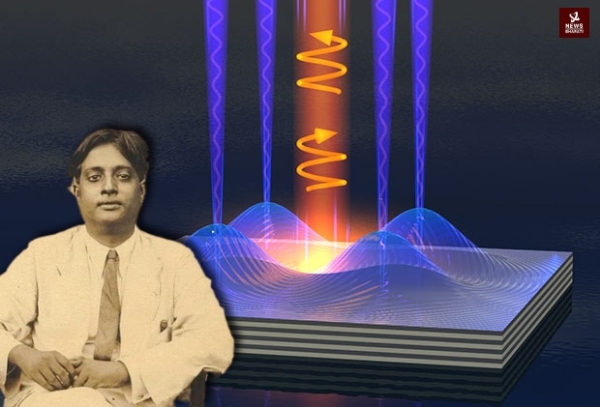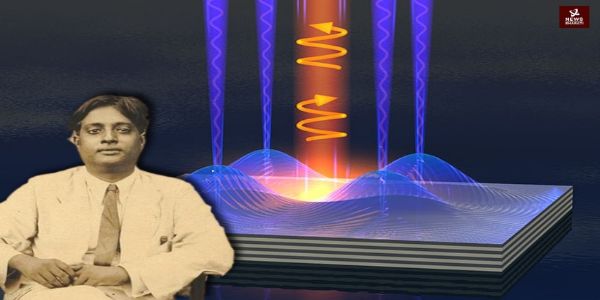Vishwaguru Bharat 10: Unveiling Quantum Marvels through Satyendra Nath Bose's pioneering work of Bose-Einstein Condensate
Bose"s collaboration with Einstein not only led to the discovery of the Bose-Einstein Condensate but also catalyzed advancements in quantum mechanics and statistical physics.
Total Views | 162
The Bose-Einstein Condensate (BEC), a groundbreaking state of matter with astonishing quantum properties, is a testament to the innovative genius of Satyendra Nath Bose, an Indian physicist whose contributions revolutionized our understanding of fundamental particles and their behavior. The tenth article of the series 'Vishwaguru Bharat' delves into the pioneering work of Satyendra Nath Bose and its profound impact on the discovery and study of the Bose-Einstein Condensate.

Early Life and Academic Pursuits of Satyendra Nath Bose
Born in 1894 in Calcutta, India, Satyendra Nath Bose exhibited exceptional intellectual abilities from a young age. He pursued his higher education in Calcutta, where he conducted research in various fields of physics, including statistical mechanics, quantum theory, and cosmology. Bose's deep curiosity and analytical thinking set the stage for his groundbreaking contributions to the world of physics.
Quantum Statistics and Bose-Einstein Statistics
One of Bose's most influential contributions to physics emerged from his study of quantum mechanics and statistical mechanics. In 1924, Bose published a paper titled "Planck's Law and Light Quantum Hypothesis," in which he presented a new statistical interpretation for counting quantum states. This interpretation, now known as "Bose-Einstein statistics," was groundbreaking because it extended the statistical treatment of particles to include identical particles without imposing any restrictions on their distribution. Unlike classical particles, which obey Maxwell-Boltzmann statistics, quantum particles now known as bosons could occupy the same energy state, paving the way for revolutionary ideas in quantum mechanics.
Einstein's Recognition and Collaboration
Albert Einstein recognized the significance of Bose's work and extended it further. In 1925, Einstein published a paper that applied Bose's statistical approach to particles of light, or photons, leading to the prediction of the phenomenon now known as "Bose-Einstein condensation." This groundbreaking idea postulated that at extremely low temperatures, particles with integer spin would accumulate in the lowest energy state, forming a new phase of matter with remarkable quantum properties.
Discovery of Bose-Einstein Condensate
The realization of Bose's and Einstein's theoretical predictions was achieved decades later. In 1995, scientists Eric Cornell and Carl Wieman successfully created the first Bose-Einstein Condensate using ultra-cold rubidium atoms. This new state of matter defied classical expectations, displaying properties such as superfluidity and coherent behavior on macroscopic scales. The condensate's unique characteristics challenged conventional notions of matter and energy, opening doors to new avenues of research in quantum physics.
Significance and Applications
The Bose-Einstein Condensate has proven to be a fertile ground for scientific exploration and practical applications. Its properties have been harnessed for creating incredibly precise atomic clocks, simulating exotic quantum phenomena, and advancing our understanding of fundamental physics. Researchers have also used BECs to investigate the behavior of ultra-cold gases and explore quantum states of matter under extreme conditions.
Legacy and Global Impact
Satyendra Nath Bose's contributions have left an indelible mark on the field of physics and scientific thought. His collaboration with Einstein not only led to the discovery of the Bose-Einstein Condensate but also catalyzed advancements in quantum mechanics and statistical physics. Bose's work laid the foundation for further studies in the field of quantum degenerate gases and their unique properties, contributing to our understanding of the fundamental nature of the universe.
Recognition and Honors
Bose's groundbreaking contributions to physics were not overlooked by the scientific community. He was nominated for the Nobel Prize multiple times, though he never received the award. However, his work's significance was widely acknowledged, and he was honored with various accolades and memberships in prestigious scientific societies.
Inspiration and Scientific Curiosity
Satyendra Nath Bose's life and work stand as a testament to the power of scientific curiosity and innovative thinking. His ideas paved the way for the discovery of a completely new state of matter and revolutionized our understanding of quantum mechanics. Bose's legacy continues to inspire physicists and researchers to explore the frontiers of science, pushing the boundaries of human knowledge.
The Bose-Einstein Condensate stands as a remarkable testament to the visionary work of Satyendra Nath Bose. His contributions to the field of quantum mechanics and statistical physics not only expanded our understanding of the fundamental nature of particles but also led to the discovery of an entirely new state of matter. Bose's legacy transcends the scientific realm, serving as an inspiration to all who seek to unravel the mysteries of the universe through intellectual curiosity, creativity, and a deep appreciation for the wonders of quantum reality.
--
Bharati Web





